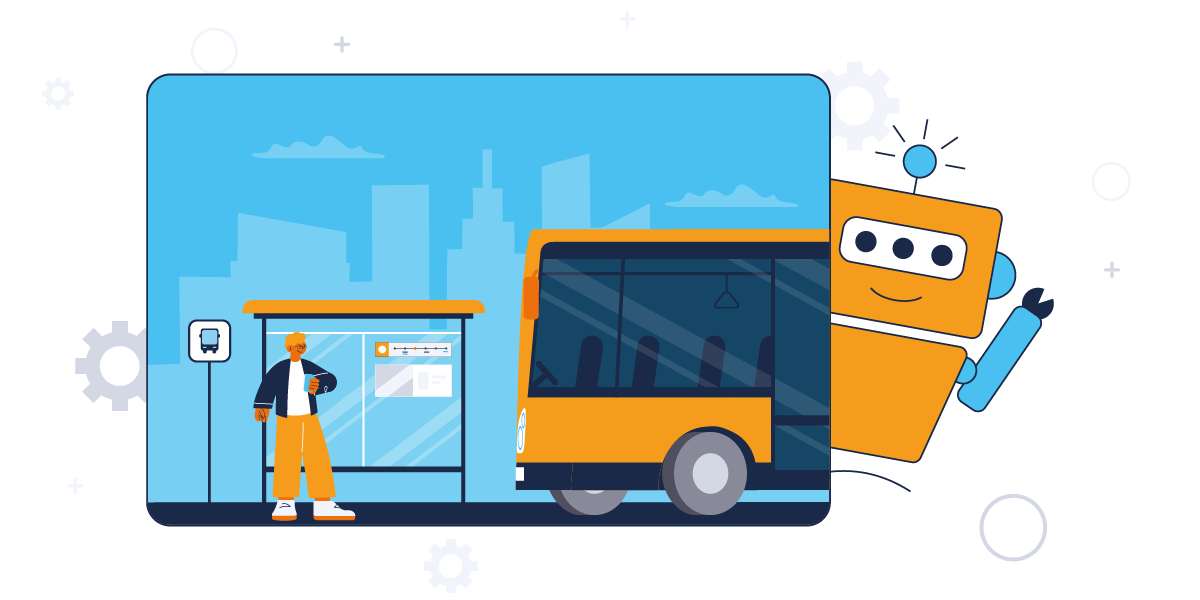In the public transportation sector, customer experience can directly impact ridership and loyalty. Commuters expect efficient, reliable, and convenient services, and chatbots are helping meet these demands by offering instant support and personalized services.
Scenario 1: Assisting Busy Professionals with Time Management
Imagine a business professional who commutes daily by train and bus, attending crucial meetings that require strict timing. This commuter relies on public transportation to stay on schedule and meet deadlines. However, unexpected delays or schedule changes can disrupt their entire day, and potentially jeopardize their career or affect the success of other businesses. Let’s work towards making the world of commuting more efficient and reliable.
Scenario 2: Navigating Service Changes & Updates
Public transportation systems are often subject to changes, whether it’s due to maintenance, construction, or seasonal adjustments. These changes might involve altered routes, updated fares, or schedule shifts. Such modifications can leave commuters feeling frustrated and uncertain, especially if they are caught off guard or don’t receive timely notifications. A chatbot can play a crucial role in managing these disruptions by keeping passengers informed and providing them with alternative solutions.
How Chatbot Helps:
- Real-Time Alerts & Notifications: A chatbot can provide real-time updates to commuters about delays, cancellations, and alternative routes, as well as alert them about crowded stations or high-traffic areas. For instance, it could guide soccer fans away from jammed routes during peak travel times, helping them adjust their plans and avoid disruptions.
- Personalized Travel Assistance: The chatbot can analyze a user’s usual commute and suggest the best routes or alert them to potential delays, ensuring timely arrivals. It can also provide inclusive route options for passengers with disabilities, elderly travelers, or pregnant women, tailoring assistance to their specific needs, such as real-time updates on accessible features like elevators or escalators under maintenance, helping users navigate with ease and avoid disruptions.
- Ticketing & Payments: Instead of standing in long lines at ticket counters, commuters can use the chatbot to purchase tickets, get travel updates, or request refunds for delayed services – all through a simple conversation. Additionally, the chatbot can help travelers, including infrequent users or tourists, find the right fare options, ensuring they have the correct ticket for their journey.
- Feedback and Recovery Assistance: The chatbot allows commuters to easily provide feedback on various aspects of their journey, such as cleanliness, driver behavior, or other service-related issues. This enables transportation providers to promptly identify and resolve concerns, improving overall service quality. In the event of disruptions, the chatbot can also offer compensation or assistance directly, providing a much more seamless and user-friendly experience than having to fill out forms buried deep on websites.
Conclusion:
In the transportation sector, where punctuality and customer satisfaction are key, chatbots – particularly AI-powered ones – are revolutionizing how services interact with passengers. By automating common tasks, offering real-time updates, and providing 24/7 support, chatbots play a critical role in improving the overall commuting experience, making it smoother and more efficient for everyone.
Would you like to get to know our trbo tool and its many applications? We’d be happy to show you how your webshop can benefit from our platform.
Schedule a free demo with us now!
Find even more insights about the trbo tool – in our favorite feature series:
Jihad’s Favorite Feature: AI Chatbot
Benjamin’s Favorite Feature: Influencer Marketing
Florian’s Favorite Feature: Product Advisor
